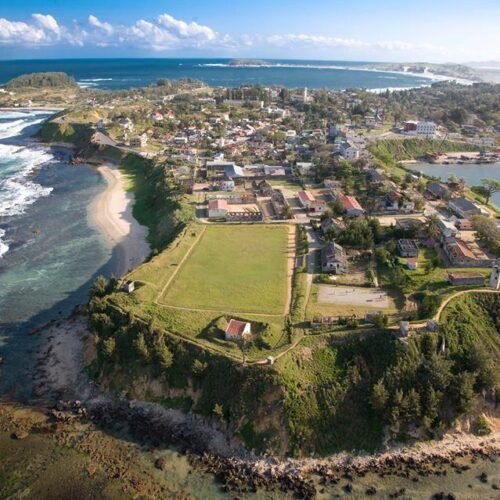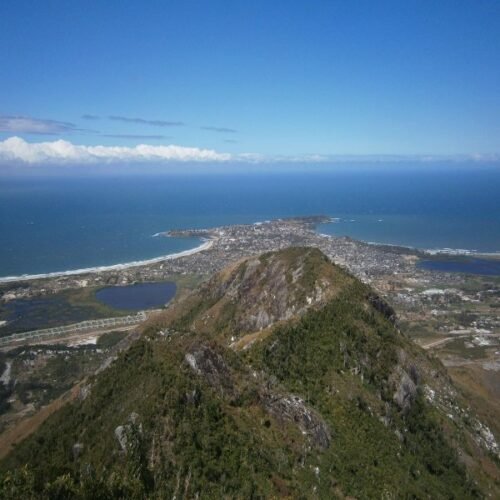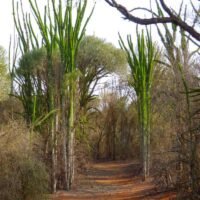Nestled between rugged mountains and the turquoise waters of the Indian Ocean, Fort Dauphin—also known as Taolagnaro—is one of Madagascar’s most captivating destinations. A unique blend of colonial history, vibrant local culture, and extraordinary biodiversity makes this southeastern coastal city a perfect place for both relaxation and adventure.
Fort Dauphin is more than just a city with a view. It’s a gateway to wild landscapes, pristine beaches, lush rainforests, and protected reserves. With its laid-back atmosphere and endless natural beauty, it’s no surprise that Fort Dauphin is becoming an increasingly popular choice for those seeking an off-the-beaten-path experience in Madagascar.


A Brief History of Fort Dauphin
The area now known as Fort Dauphin has a complex and fascinating past. While the Portuguese were the first Europeans to discover Madagascar in the 1500s, they never established a permanent settlement here. The Dutch made an unsuccessful attempt in the Bay of Antongil at the end of the 16th century, but it was the French who left the most lasting mark.
In 1643, French settlers arrived in the nearby village of Sainte-Luce, where they constructed a fort at the request of Etienne de Flacourt, a French governor. This fort became the center of French influence in the region and was named Fort-Dauphin in honor of Louis XIV, then the heir to the French throne.
However, relations with the local Antanosy people grew strained, and by 1674, the settlement faced a violent siege. The few survivors were rescued months later by the ship White Pigeon, which evacuated them to Réunion Island. Despite this, the French returned a century later and were welcomed by the local population. In the 18th and 19th centuries, Fort Dauphin became a significant maritime hub for Indian Ocean trade.
The region is also wrapped in tales of pirates, some of whom are believed to have used its coves as hideouts. Legend has it that treasure still lies buried off the coast.
When to Go
Fort Dauphin has a tropical climate with two main seasons:
- May to October (dry season): The best time to visit. Days are sunny and mild, ideal for hiking, swimming, and wildlife watching. The landscape is greener and more accessible.
- November to April (wet season): Hotter and more humid, with frequent rainfall. Some areas may be harder to reach, but the lush vegetation and fewer tourists can make it worth it.
Whether you’re into trekking, wildlife, or beach lounging, the dry season is the most recommended period for a complete and comfortable experience.
What to Do and See in Fort Dauphin
Fort Dauphin offers a variety of attractions that mix natural wonders, historical sites, and cultural encounters. Here’s what you shouldn’t miss:
1. Explore Sainte-Luce Village
This is where French settlers first landed in the 17th century. Today, Sainte-Luce is a peaceful fishing village with beautiful coastal scenery and a sense of timelessness. Walking here offers a glimpse into the area’s colonial roots and the life of the local Antanosy community.
2. Hike Pic Saint-Louis
Standing at 529 meters, Pic Saint-Louis offers one of the best panoramic views in the region. The hike to the top takes a couple of hours and rewards visitors with sweeping vistas of the coastline, the town, and the surrounding forests. Along the trail, you’ll encounter native plant species like ravinala (traveler’s tree), orchids, and raffia palms.
3. Relax on Libanona Beach and Beyond
Fort Dauphin is home to some of Madagascar’s most scenic beaches. Among them:
- Libanona Beach – Clean, calm, and perfect for swimming
- Ankoba Beach – Great for walking and enjoying the sea breeze
- False Cape – Popular among surfers and adventurers
If you’re seeking solitude, head to the more remote Lokaro Bay, about 40 km away. Its untouched coves and clear waters are perfect for swimming, snorkeling, and boating. You can also take a boat trip through mangrove channels lined with pandanus and exotic plants like “elephant ears.”
4. Discover Lake Vinanibe
Located just outside the city, Lake Vinanibe is a peaceful spot surrounded by nature. It’s ideal for windsurfing, kayaking, or just relaxing on its shores. Birdwatchers will find plenty to observe here, especially during early mornings and late afternoons.
5. Visit Historical Forts
History buffs can explore remains of Fort Flacourt and the Portuguese Fort, relics of the colonial past that still echo stories of conflict, trade, and maritime ambition. While not fully restored, these structures hold significance for understanding Fort Dauphin’s legacy.
6. Reconnect with Nature in the Saïadi Botanical Garden
This lush garden is a living showcase of the region’s biodiversity, featuring hundreds of plant species including orchids, tree ferns, and medicinal plants. It’s also home to several lemur species such as sifakas, brown lemurs, and fulvus, as well as crocodiles, butterflies, and birds. A great stop for families and photography enthusiasts.
7. Visit the Nahampoana Reserve
Just 7 km from the city, this private reserve is a must-see for anyone who loves wildlife. Here, you’ll find:
- Five species of lemurs
- Reptiles like chameleons and crocodiles
- Giant tortoises
- Rich tropical vegetation
The reserve is tranquil, shady, and ideal for a quiet walk immersed in nature.
8. Day Trips to Andohahela National Park
About an hour from Fort Dauphin lies Andohahela National Park, a UNESCO-recognized biosphere reserve where three distinct ecosystems meet: tropical rainforest, dry spiny forest, and high-altitude vegetation. It’s one of the best places in southern Madagascar for trekking and wildlife spotting.
9. Multi-Day Excursion to Berenty Reserve
A longer trip (recommended 2+ days), Berenty Reserve is world-famous for its easily accessible lemurs, especially ring-tailed lemurs and dancing sifakas. It’s one of the best places in the country for close wildlife encounters and birdwatching.
Final Thoughts
Fort Dauphin is a place where Madagascar’s layered history and raw natural beauty converge. Whether you’re hiking up mountains, tracing colonial footprints, or lounging on quiet beaches, the city offers an immersive and multifaceted experience. It’s a destination for those who want more than a beach holiday—a journey into nature, culture, and the past.
From vibrant markets and sleepy fishing villages to high peaks and hidden lagoons, Fort Dauphin is one of Madagascar’s best-kept secrets—ready to be explored at your own pace.

